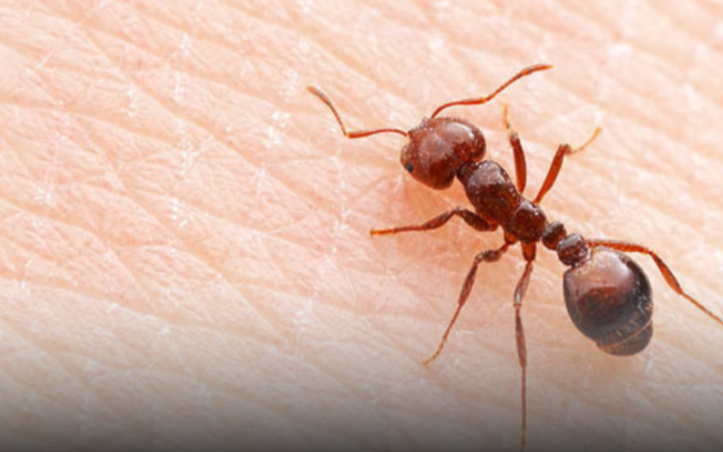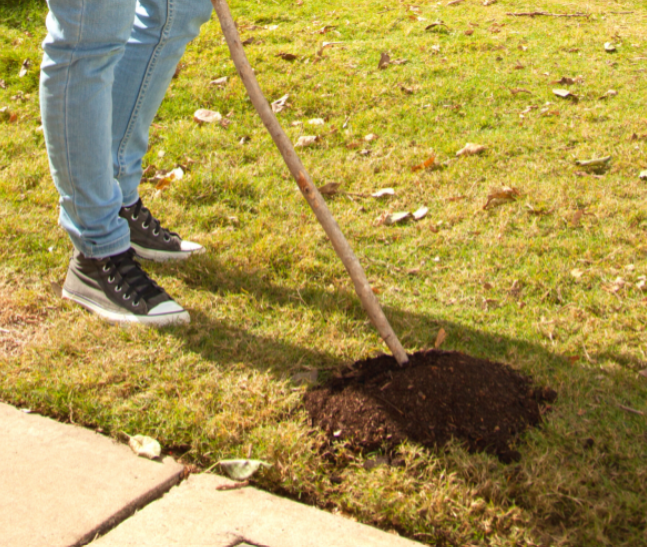Fire ants: the unwanted tourists from Queensland
Kristin Murdock
01 July 2023, 9:40 PM
 Vigilance is paramount to stop the invasive fire ants crossing the border into NSW from Queensland.
Vigilance is paramount to stop the invasive fire ants crossing the border into NSW from Queensland.Red fire ants are the tourists we don't want to see coming down from Queensland. In fact, Invasive Species Council (ISC) fire ant campaigner, Reece Pianta likens their environmental and financial impact to that of the cane toad.
ISC is an alliance of environment, agriculture, industry and land management groups including Queensland Farmers Federation, Canegrowers and Darling Downs Environmental Council who are calling for urgent government action on Australia’s fire ant outbreak
"Fire ants are one of the biggest environmental threats facing Australia. The prospect of Australian governments giving up on fire ant eradication is truly terrifying," Mr Pianta said.
Fire ants are certainly one of the worst invasive species to reach Australia's shores.
First detected in Brisbane in 2001, it is thought they may have arrived 20 years earlier, probably via shipping containers. They have potential to ruin our lifestyle and significantly impact our environment and many industries including agriculture.
Fire ants inflict painful stings and can potentially restrict everyday activities such as barbecues, picnics and sporting events.
While fire ants are not known to occur in New South Wales, they currently infest a large area of South East Queensland with nests found very close to the border, keeping NSW biosecurity departments on high alert.

Fire ants are quite small at 2 to 6mm. IMAGE: www.fireants.org.au
NSW currently partners with and contributes funding to the National Red Imported Fire Ant Eradication Program. This program aims to eradicate fire ants from South East Queensland by 2032 and has been in place since 2017.
The program is a nationally cost-shared initiative funded by all Australian state and territory governments, and the federal government.
ISC say it is critical that State and Federal Governments make decisions to enable fire ant eradication and make up for lost time.
An Agriculture Ministers meeting is to be held in Perth in July and the ISC is pushing for actions to invest now to eradicate Australia’s fire ant infestation over the next decade.
According to the ISC, we should be most worried about fire ants getting into the Murray Darling basin where their rafting capabilities will see them spread rapidly through the river system.
"This is a huge worry for NSW, Victoria and South Australia – for our food bowl and for all the communities who rely on that region," ISC said.

Since these statements, Tara Moriarty, Minister for Agriculture, Minister for Regional New South Wales and Minister for Western New South Wales has announced the NSW Government will spend an additional $80 million to protect the state from red imported fire ants, with the invasive and aggressive pest now on the march towards the NSW border.
“It is important to keep NSW free from red imported fire ants, because if they become established in NSW, it will have a huge impact on the way we live our lives and could affect our export markets and ability to trade,” Ms Moriarty said.
“Red imported fire ants can damage electrical and agricultural equipment, sting people causing allergic reactions, sting pets and livestock, kill native plants and animals as well as damage ecosystems beyond repair."
“Containing the spread of fire ants will provide an estimated economic benefit of more than $1 billion per year in avoided costs and impacts, which is why we have committed $80 million over the next four years to protect NSW and partner in the ongoing response to Red Imported Fire Ant.

Ms Moriarty said the NSW Department of Primary Industries (DPI) is working closely with Councils in the north-east of the State, and Queensland bodies, to alert locals to be on the lookout for red imported fire ants.
“NSW DPI has enacted a fire ant surveillance program and is ready to respond if the fire ants are found, however, we also need the support of the community to spot their march and be on the lookout for them.
"Fire ants are dark reddish-brown with a darker black-brown abdomen and from two to six millimetres long, and while they can look similar to other ants, their nests are distinctive with mounds of loose, crumbly or fluffy looking soil with a honeycomb appearance.
For more information, go to: www.dpi.nsw.gov.au/biosecurity/insect-pests/fire-ants




